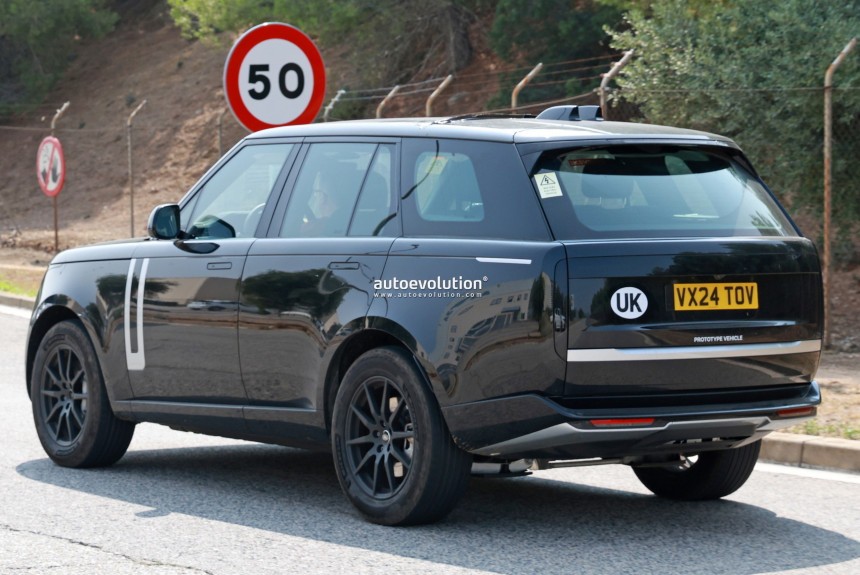
This component features a closed-off design, as there is no internal combustion unit to feed air to behind it. Moreover, the car had no tailpipes whatsoever and an EV sticker on the rear windshield. The wheels are quite small compared to the OEM offering of this model and were wrapped in chunky tires. However, we don’t expect these alloys and rubber to make their way to the production variant, which will utilize Pirelli rayon tires.
As you can imagine, details surrounding the ‘oily’ bits are unknown. However, we can tell you that the Range Rover Electric will build on the MLA (Modular Longitudinal Architecture). Does this sound familiar? Well, it’s the same platform used by the regular Range Rover, and it’s also the foundation stone of the smaller Range Rover Sport. The construction supports internal combustion units, electrified powertrains, and battery-electric assemblies.
Given that it uses familiar underpinnings, we don’t expect the all-quiet Range Rover to behave that differently from the regular ICE-powered versions on the go. Sure, it will be a bit heavier, but overall, it should offer a similar driving experience. JLR also announced that it will benefit from an advanced traction control system that reacts roughly 100 times faster than the usual setup, so the off-roading prowess should still be on deck.
Nevertheless, you wouldn’t want to wander that much off the lit path, as you will eventually run out of juice. Plus, you shouldn’t do that without a few modifications that would include at least a set of proper tires. We expect Land Rover to unveil the Range Rover Electric in a few months, though that’s our two cents, as the model could be due sooner or later.











